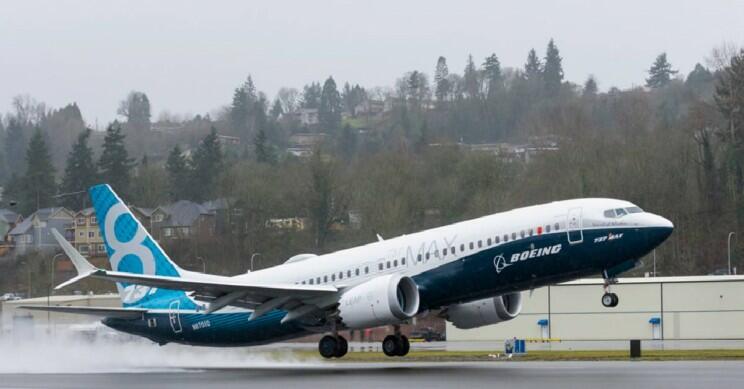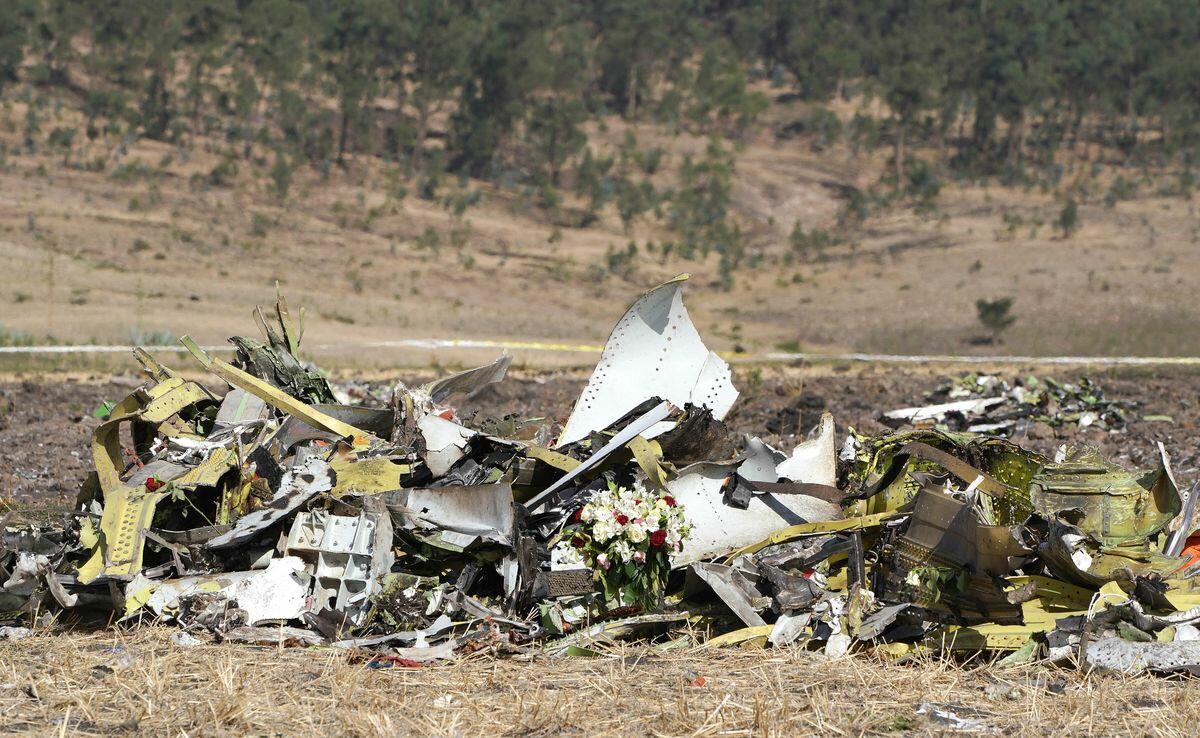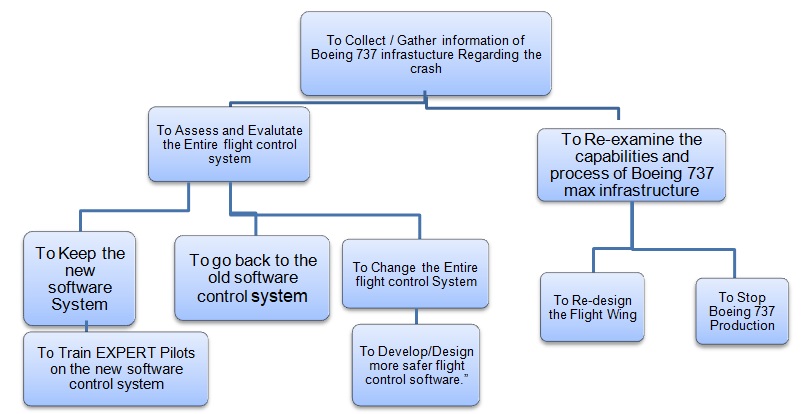Introduction
When Boeing Commercial Airplanes introduced Boeing 737 Max, it marked an important milestone in meeting the needs of its clients. The Narrow-body aircraft, which received Federal Aviation Authority (FAA) certification on March 8, 2017, and made its first delivery to Malindo Air on May 6, 2017, is fuel-efficient (Wallace par. 4). The new design comes in four different variants, with a passenger capacity of 138 230. According to Rivero, 737 Max was a major success in the local and international markets(par. 6). By January 2019, the company had already delivered 350 such aircraft and was working on 5,011 other orders for different airlines around the world. It was becoming the firm’s most popular product because of its efficiency. However, the tragic accident of Lion Air Flight 610 and Ethiopian Airlines Flight 302 had a massive impact on the firm as the safety of the new popular airplane came under sharp criticism. In this case study, the focus is to discuss factors that contributed to the accident, the manner in which Boeing Commercial Airplanes respondent to the crisis, and the future of 737 Max.
What Happened
The history of Boeing 737 Max can be traced back to the day when Airbus launched its fuel-efficient Airbus 320neo family on December 1, 2010 (Arvai and Schonland 67). The introduction of the new design was a major step in the aviation industry towards a new design of planes that lowered the cost of operation. Soon after the launch, American Airline ordered 460 narrow-bodied planes from Airbus (Rivero 6). Other major airlines did the same, a move that threatened the position of Boeing as the dominant player in the aviation industry. The management of Boing realized that something had to be done to address the growing competition. The engineers came up with a concept similar to that of Airbus.
The new design, 737 Max, became one of the most fuel-efficient airplanes in the world at the time it was launched. It received massive acceptance in the international market and promised to restore Boeing to its dominant position in plane manufacture (Arvai and Schonland 42). Figure one below shows the Boeing 737 Max 8s, which had become the most popular commercial airline in the world. However, Boeing Commercial Airplanes is currently dealing with a major crisis following the recent accident. The company is struggling to deal with a situation where its most popular product is no longer considered safe in an industry where safety is the most important factor for customers.It is important to look at the two accidents.

Lion Air Flight 610 and Ethiopian Airlines Flight 302
On October 29, 2018, Lion Air Flight 610 took off from Soekarno-Hatta International Airport in Jakarta at 6.20AM (Wallace 10). It was destined to Pangkal Pinang, Bangka Belitung Island in Indonesia. However, the plane nose-dived and crashed into the Java Sea only 12 minutes after the takeoff, killing all the 189 people on board (Hawkins 7). In less than 5 months after the initial accident, the same thing happened to the Ethiopian Airlines Flight 302. It took off from Bole International Airport in Addis Ababa on March 10, 2019, at 8.38AM with its destination being the Jomo Kenyatta International Airport in Nairobi Kenya (Wallace par. 8). However, the plane nosedived and crashed in a field, near Bishoftu town six minutes after taking off, killing all the 157 people on board the plane (Rivero par. 13). Figure 2 below shows the remains of the Ethiopian airline. Both jets in the two accidents were Boeing 737 Max 8s, which had become the bestselling aircraft in history at the time of the incident.

The initial investigations revealed that both accidents were caused by a software error, which would occur when the system makes a wrong diagnostic of the exact position of the plane. The software would force the nose of the plane downwards after erroneous detection that the engine would stall. In both cases, pilots were not prepared for such an eventuality and did not know how to respond to such situations, leading to the accident. The cockpit voice recorder and the flight data recorder were recovered in both cases, and they revealed the same problem. The pattern of the accident was eerily similar (Wallace par. 5). Soon after the second accident, China grounded all the 737 Max 8s, and the European Union followed. The FAA reluctantly grounded this model in the United States as they waited for Boeing to resolve the problem. The company is currently working on the issue, and most importantly, trying to restore trust in the market.
Their Structure of Priorities
Safety of passengers, crewmembers, cargo, planes, and the airport, in general, are the most critical factors in the aviation sector. As airlines struggle to deal with the rising fuel cost, the idea of having a fuel-efficient aircraft is often a welcome relief. However, the fuel-efficiency should not come at the cost of safety and security concerns. The priority of aircraft manufacturers, as Arvai and Schonland note, should always be on the safety of passengers(67). The plane should consume less fuel, but still maintain the same safety standards or if possible, become safer than the initial models. When Boeing 737 Max 8s was introduced to the market, most of the airlines made their order, knowing that it had improved both the efficiency and safety. However, the two successive accidents have caused major concern to stakeholders in the aviation sector.
The approach the company used in responding to the crisis can help determine the structure of its priority. Wallace explains that the accident caused on of the biggest dilemma the company has ever faced in its recent history(par. 9). On the one hand, it was important to protect the image of the firm to assure its global customers that its products are safe. The easiest way of doing that would be to blame the accident on pilot error, which they did to a certain degree. This strategy of blaming the pilot error on the accidents would strain its relationship with some of its most important clients. The trust will be gone, as these clients would consider Boeing a firm that is not willing to take responsibly. On the other hand, the company had to show its support to the airlines, which are its primary customers, by taking the blame. The problem with this strategy was that Boeing would be admitting to fundamental flaws in its new design, which would not only lead to compensation of significant sums of money to the victims but also an erosion of trust towards the new model (Arvai and Schonland 50).
The management decided to integrate both approaches when responding to the accident. It admitted that a software problem existed that caused the erroneous nosedive of the plane. However, it noted that pilots could easily correct the error by deactivating the Maneuvering Characteristics Augmentation System (MCAS) and manually taking control of piloting the plane instead of relying on autopilot. It became evident that pilots around the world did not understand how they needed to respond to such cases of emergency (Hawkins 3). The two investigations into the two accidents are on the final stages and Boeing has committed to addressing the software problem and encouraged airlines to consider taking their pilots through some form of training on how to use the new plane.
Their Strategy for Mitigating Risks
Risk mitigation strategies help in dealing with crisis and enhancing the ability of a firm to remain sustainable when faced with a major crisis. The Lion Air Flight 610 and Ethiopian Airlines Flight 302 crash had a devastating impact on the firm because, at the time of the accident, the two were the best selling products of Boeing. Arvai and Schonland explain that the approach that a firm takes to mitigate risks depends on several factors such as financial capacity, internal capabilities, and strategies used by the rival companies(64). The recent crisis at Boeing has revealed that the company uses two main strategies to mitigate risks, and they are risk transfer and risk limitation/reduction.
Risk Transference
In this strategy, a company gives up control of some of the critical activities. In case an issue arises from such activities, it would not be held accountable. Boeing does not manufacture its own engines (Arvai and Schonland 72). It has outsourced General Electric (GE) and Rolls-Royce to be responsible in the production of the engines it uses in its planes. It means that if it were established that an accident arose from a malfunctioning engine, Boeing would not be responsible for the liabilities that would arise. The liability would be on the manufacturer. One of the biggest shortcomings of this strategy is that Boeing cannot assure its customers of high-quality engines because the responsibility has been transferred to another firm.
In the recent accidents discussed above, the management accepted that there was an issue with the engine, but noted that in both cases, pilots lacked the needed skills and experience to reverse the problem. The investigation revealed that the accident was avoidable if the pilots knew what to do in such cases of wrong diagnosis and automatic rectification of such problems. This is another strategy of transferring risks from the company to the pilots. The strategy was seen as a deliberate effort of the management to protect the image of the firm and to ensure that it retains its competitive advantage in the market.
Risk Limitation/Reduction
Risk limitation/reduction/control is one of the best ways of mitigations, as Arvai and Schonland observe(96). In this strategy, the firm avoids any possibility of transferring the risk or the blame to other entities. It involves taking deliberate steps to ensure that the probability of occurrence of any risk is minimized as much as possible. In the aviation industry, risk minimization is often considered the only way of enhancing safety. As such, any accident must be investigated thoroughly to understand its cause. Although the party found to be responsible for the accident may be punished, such as the aircraft manufacture being fined, the primary goal is to avoid a possible occurrence of a similar event.
Redesigning the entire navigation system and effective training of pilots was identified as some of the factors that must be considered to avoid a similar occurrence in the future. When using this strategy, Wallace (par. 9) notes that the risk management team must ensure that it may not be possible to eliminate the occurrence of risks. Events such as terrorists’ attack, human error among pilots, criminal acts, and extreme weather may be out of the manufacturers’ control. However, measures can be taken to minimize the ability of criminals and terrorists using weapons against the crew. New technological measures can also be considered to make the plane more resilient to such extreme weather condition. It may help to reduce the severity of an accident.
Analysis of the Risk Tree Involved
Boeing Commercial Airplanes has to define the appropriate approach of addressing the current problem to ensure that it retains its dominance in the aircraft manufacturing industry. In this section, the researcher used risk tree to identify specific objectives that the company should consider as it seeks to address the problem. As shown in the objective analysis structure in figure 3 below, the primary objective is to collect information of Boeing 737 infrastructure regarding the crash to help determine the best action that the company should take. The analysis can take two approaches, as discussed below.
The first approach is to re-examine the capabilities and process of Boeing 737 Max infrastructure. The analysis would determine if the capabilities of the new design meet the intended expectations and emerging demands, especially after the two accidents (Arvai and Schonland 97). The recent events show that the current capability of Boeing 737 Max is already questionable. Depending on the magnitude of the problem, the company can take any of the two approaches. First, it can consider re-designing the flight wing to correct the error that has been identified in the two accidents. This is the easiest option of addressing the problem, but it can only be applied if customers still have some trust in this model. If the management realizes that the image of the model is irreparable, then the only option would be to stop the production of Boeing 737 Max.
The second approach would be to assess and evaluate the entire flight control system. The assumption that the management would be making in this context is that the problem only exists at the flight control system, and when it is fixed, the plane would be safe. The firm can decide to keep the new software system that addresses the weaknesses of the current system. This approach would also mean that pilots would have to be trained on how to operate under the new system. The second option would be to go back to the old software control system that had proven to be effective. In this case, the new Boeing 737 Max will operate under the old system but with a new engine and body design. The third option would be to change the entire flight control system and replace it with a more interactive and effective one that would inform pilots of possible software errors and how to react in such cases. It would mean that the company has to develop new flight control software that is safe and able to make correct diagnostics during the navigation process. These objectives are summarized in the figure below.

Future of the 737 Aircraft
Boeing 737 Max 8s is one of the best products that the company has ever delivered in the market. Its fuel-efficiency and improved systems made it the bestselling aircraft in history (Wallace 11). However, the tragic events have put to question its sustainability in the market. As Arvai and Schonland observe, it is unfortunate that the bestselling aircraft have now been grounded, with its future being unclear(35). In the aviation sector, safety comes second to none, and the recent events show that this aircraft is not safe. It may not be easy for the company to convince its customers about the safety of this product. Whenever an accident occurs, the image of the airline gets significantly affected. In the current competitive business environment, airlines are keen on protecting their reputation. They are keen on avoiding possible air crash such as those, which happened recently.
The future of 737 Max depends on the actions that this company will take to address the current crisis. Given the fact that the cause has been identified and that, it is a software problem that can be resolved with ease, the management of Boeing should engage all the stakeholders to assure them of the safety of the aircraft. The FAA and individual airlines or relevant international agencies in the aviation sector should be invited so that they can ascertain the fact that the problem has been resolved. The firm should also invite pilots for further training on how to deal with emergencies when using 737 Max. These bold steps may be the only ways of protecting the future of this aircraft.
Conclusion and Recommendations
Lion Air Flight 610 and Ethiopian Airlines Flight 302 accidents, which happened within 5 months and in less than two years after the initial launch of this new aircraft, demonstrate a major weakness that Boeing needs to address. It was unfortunate that the model involved in the two accidents was the most popular in the global market prior to that. China, the European Union, the United States, and many other regional and international authorities have grounded the plane for safety reasons. At the time of this incident, there were over 5000 orders that the company was addressing. Boeing faces stiff competition from Airbus and other major market rivals in the international aviation industry. Such events would have a significant impact on its image. The investigation revealed that the malfunctioning of the engine was the main cause of the accident. It was also revealed that the pilots of the two planes lacked proper knowledge on how to use the new navigation system of 737 Max 8s. The management of Boeing should consider the following recommendations to ensure that its operations remain sustainable:
- The company should accept the liability in the two cases and explain to its customers how it has made steps to address the system error in 737 Max.
- The company should insist on mandatory training for all pilots who are planning to use any of their new models to ensure that they can deal with emergencies when they arise.
- The Federal Aviation Authority should consider the responsibility of assessing the new aircraft that the local companies produce instead of handing over that responsibility to the firm that should be assessed.
Works Cited
Arvai, Ernest, and Addison, Schonland.Embraer E-Jets E2: Building on Success.AirInsigh, 2016.
Hawkins, Andrew J. “Everything You Need To Know About the Boeing 737 Max Airplane Crashes.” The Verge, 2019.
Rivero, Nicolas. “Flaws in the System: A String of Missteps May Have Made the Boeing 737 Max Crash-Prone.” Quartz, 2019.
Wallace, Gregory. “FAA Officials in Hot Seat as World Awaits Boeing 737 Max Fix.” CNN, 2019.